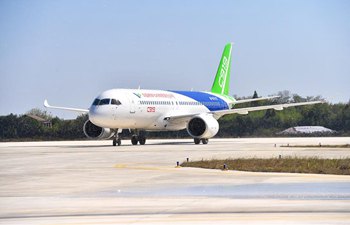WASHINGTON, Oct. 31 (Xinhua) -- A study published on Wednesday in the journal PLOS One provided molecular, DNA evidence that domestic animals made their way into high mountain corridors along the ancient Silk Road more than four thousand years ago.
Using ancient proteins and DNA recovered from tiny pieces of animal bone, German, French and Russian scientists found that long before the creation of Silk Road, a set of trade routes linking East and West Eurasia through its arid continental interior, pastoral herders living in the mountains of Central Asia helped form new cultural and biological links across this region.
However, in many of the most important channels of the Silk Road itself, including Kyrgyzstan's Alay Valley, a large mountain corridor linking northwest China with the oases cities, very little is known about the life of the early people who lived there in the centuries preceding the Silk Road era.
In 2017, an international team of researchers identified a series of never-before-seen habitation sites along the mountain margins that form Kyrgzstan's southern border with Tajikistan.
Test excavations and surveys at these sites produced archaeological animal bones that promised to shed light on how people used the Alay region in the past. But those bones were so small and badly broken that researchers could no longer use their size and shape to identify which species they originally belonged to.
William Taylor from the Max Planck Institute for the Science of Human History and his colleagues used laser-based, mass spectrometry to identify the peptide building blocks that make up collagen inside the bone itself and produce unique "fingerprints."
They discovered that people living in the Alay Valley began herding sheep, goat, and cattle by at least 4,300 years ago.
Combining their work with ancient DNA research at France's University of Toulouse, they also found that in later centuries, as Silk Road trade flourished across the region, transport animals like domestic horses and Bactrian camel became increasingly significant in Alay.
This study showed that biomolecular methods and ancient DNA can take the fragmented piles of bone that have been almost worthless to archaeologists and open up a whole new world of insights into the human story across Central Asia, according to Taylor.

















